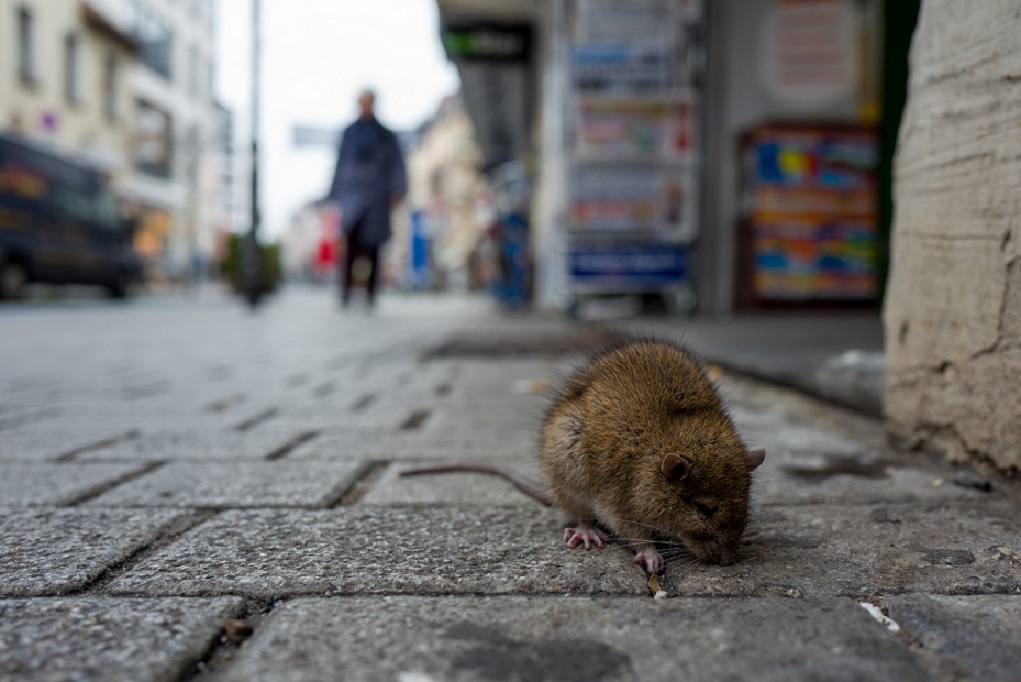
New York rats. You’ve seen them. They’re often scurrying along subway platforms, or rummaging through garbage in the street. And who can forget the infamous “pizza rat?” Rats seem inescapable here, and part of being a New Yorker is acknowledging that you’ll have to coexist with them to some extent. But if you want to defeat NYC rats as much as possible, you must learn about your enemy.
Where Do New York Rats Come From?
The rat species found in NYC is the Norway rat (Rattus Norvegicus), commonly referred to as the brown rat. The Latin name is actually a misnomer, because the species is believed to have originated in Northern China and Mongolia, eventually migrating to Europe.
The rats we see around the city today are descendants of those that came from Western Europe, having hitched a ride on merchant and passenger vessels in the 1700s. NYC Pest Control’s Bill Swan says that once the Norway rats arrived, they quickly killed off the smaller roof rats that inhabited the city, and they’ve continued thriving to this day.
Rats Are New Yorkers, Too
It’s difficult to empathize with vermin, but NYC rats have more in common with their human counterparts than you might think. They have daily routines, communicate with one another, and have their own social order. They’re also highly intelligent.
“A rat is so smart they notice when something new enters their environment and are highly suspicious,” Swan explains. “For example, older rats won’t eat a new food source. They’ll leave it out for the younger ones to see if they die from eating it. Only then will they venture out to try it.”
Swan says that they’re also great at studying and adjusting to human behavior. For example, suppose you have rats in your home. One decides to come out and confront you. You react by running out of the room or screaming. Later, the little beast does the same thing to your roommate, except your roommate decides to go after it with a broom. The rat will decide that your roommate is a threat and you are not. Thus they’ll continue to have the run of the place while you’re home, and hide when your roommate is around.
Similar to New Yorkers, rats have their own neighborhoods. Fordham University doctoral candidate Matthew Combs, featured in the video above, found there are genetically distinct uptown and downtown rat populations. Midtown provides a buffer zone separating the two populations. This does not mean Midtown is rat-free. It just means rats have a relatively more difficult time thriving in a commercial center, with less food and a lack of prime real estate for their burrows.
Researchers were able to figure out which neighborhoods certain rats came from, and created a map tracking their migration, which was featured in The Atlantic. Swan explains that within their neighborhoods, rats tend to really play it safe, not straying more than 500 to 600 yards from their homes.
How NYC Combats the Rat Population
One of the challenges in pest control is the sheer numbers of rats. No one knows for certain how many rats live in NYC, but estimates range from as low as 250,000 to as high as tens of millions. A female rat can have roughly 17 pups every three months, which means approximately 68 baby rats per year. Yikes! Add to that their ability to swim, squeeze into quarter-sized spaces, and chew through most materials, and we’ve got quite the formidable foe.
Rat burrows can be found all over the city. They’ll take shelter in dirt holes in parks covered by bushes and ground cover, or gaps in the concrete of buildings and stoops. In the winter, they tend to head to the subway tunnels, seeking refuge from the cold. Their burrows require an entry only 1 to 4 inches wide, and many of their underground tunnels have multiple routes of escape. If the main entrance gets plugged, they’ll just pop out the other side and go about their day.
City pest controllers have taken to filling rat burrow entrances with dry ice pellets to help combat the creatures. The carbon dioxide from the dry ice suffocates the rats and eventually kills them.
In 2017, the de Blasio administration allocated $32 million to tackle the rat problem. The goal is to reduce the rat population by 70 percent in some of NYC’s most infested areas, such as Grand Concourse, Chinatown, the East Village, Lower East Side, Bushwick, and Bedford-Stuyvesant. The city has also launched an effort to tackle rat problems in some of the most infested NYCHA properties, after a video of rats running amok at one of the agency’s Bronx housing complexes hit Instagram.
In addition to ramping up waste management in problem neighborhoods and buildings, the city also offers pest management training sessions for locals. The Department of Health and Mental Hygiene coordinates the NYC Rodent Academy. These free training courses are geared towards homeowners, superintendents, and property managers interested in keeping their properties rodent-free.
Renter Tips for Rat-Free Living
While we certainly understand the urge to want to kill off all of the furry creatures ASAP, you’ll have better luck if you wine and dine them first. Remember, rats like predictability. They need time to get used to a trap. Swan recommends killing them with kindness and lots of free food. Then after a few days, bring in a cavalry of traps.
“It’s important to put as many traps out at once as you can,” Swan insists. “That way you get most of them all in one go. Be quick to remove the bodies as the others will figure it out and tell the rest.”
While you need to dispose of the bodies quickly, reset the same trap. It’s gross to think about, but the rats will be more apt to go near the trap if they can tell another rat has been there.
The main thing renters can do is to cut off their food supply.
“Depriving them of food is the best defense,” says Swan. “They don’t go out dancing. They’re always looking for food.”
And not only your food. If you have pets, make sure to only fill the bowl when your pet is ready to eat. Otherwise, you are unwittingly providing your pests with a constant source of food.
—
Hey, why not like StreetEasy on Facebook and follow @streeteasy on Instagram?









